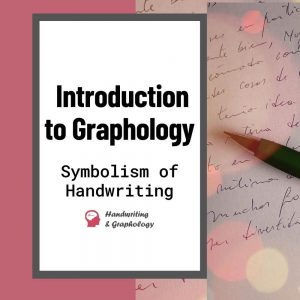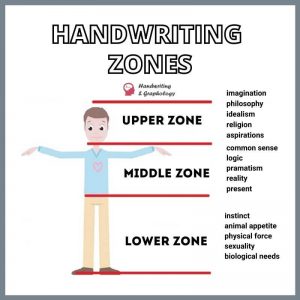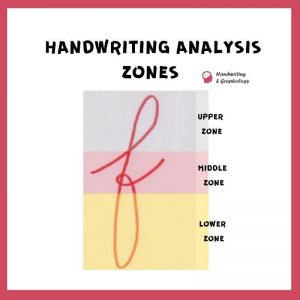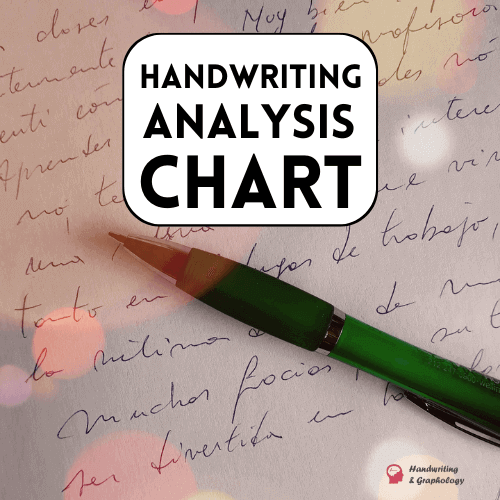This is an introduction to graphology for beginners. Our goal is to spread this wonderful technique and that more and more people enjoy its benefits.
Symbolism of Handwriting

Hello my friends, today we are going to delve into the fundamentals of graphology. To understand How does Graphology work we must know what the Symbolism of Handwriting is. Since, to interpret a doodle, a writing or a drawing on a sheet of paper we will resort to this symbolism.
Since cave times, man has used drawings (cave paintings) as a form of communication and as a way of leaving testimony of his presence.
Introduction to Graphology’s Symbolic Language
The way in which the subject organizes the graphic space in drawings and writings will reflect the level reached by the conformation of his personality. Because the person writes or draws according to how it is. His personality is projected on that sheet.
The act of drawing is a powerful means for us to let out our emotions. It allows us to read our minds from what we have scribbled or sketched on a sheet of paper. Psychology applies the symbolism of space in Projective Tests such as the HTP (House-Tree-Person).
Sigmund Freud, the neurologist who created psychoanalysis, was the one who introduced the symbolism of space in psychology.
Understanding Signs and Symbols in Handwriting Analysis
Projective techniques manage to externalize experiences and experiences that we do not remember. When faced with the blank page, emotions that come from the unconscious are manifested and reflect our relationship with the world.
Max Pulver, a Swiss psychologist and graphologist, founded the Swiss Graphological Society. He was the first to introduce the symbolism of space to graphology. He determined the concordance between the way of executing the writing on the sheet and the behavior of the person.
Thus, he managed to express the symbols in writing. This researcher points out that there are some images that we have incorporated since ancient times. They are mental associations that we habitually use in life and that guide us unconsciously.
Fundamentals of Graphology

What does the blank sheet symbolize?
The blank sheet symbolizes the time and space that we have. It is the environment in which writing will take place. It is the empty reality that we are going to occupy is where we are going to install or develop. When the subject is faced with a blank page, very deep sensations are mobilized that at an unconscious level can evoke from nothing to the impulse or the urge to organize the world.
The answer, whether it be drawing or telling a story, will represent the treatment that this subject has with the world, his way of inhabiting it, his way of knowing it, his way of adjusting. In short, the white page would represent the living space.
What does Handwriting symbolize for Graphology?
The act of writing is an expression of SELF. The way each person occupies that space on the sheet of paper indicates:
- How you feel.
- Emotional balance
- Level of objectivity
- How much the environment around you influences you
- Degree of impulsivity or self-control.
Some authors divide the graphic space into four zones or quadrants, (others into 9).
These symbolic areas are going to be applied to analyze a drawing, a writing, a signature, a sheet or a letter.
We will take into account two axes: Vertical and horizontal.
PDF Symbolism of Space (Max Pulver)
Explore the PDF pages on this website to find more resources you can add to your own Graphology Book. Click here to download the PDF Printable Symbolism of Space
Horizontal Axis (Time)
The horizontal axis goes from left to right and corresponds to TIME. In our culture we write from the left to the right. Time projects into the future (right) and moves away from the past (left).
Left Zone
The Left zone is associated with the mother, with regressive aspects, the lack of detachment from the mother’s womb, the immature “Ego”. Here the primary links, attachment to the past, degree of introversion, and the subject’s capacity for reflection are analyzed.
Right Zone
The future is located in the Right zone. Whoever predominantly occupies the space on the right is interpreted as having managed to detach from the mother, generated personal growth, has a mature “I”. In this area affective relationships with others, communication, projects and the future are analyzed.
The vertical axis is interpreted from top to bottom and is related to SPACE.
Vertical Axis (Space)
It is associated with the structure of the human body:
Upper Zone
The head is located in the upper area. This area symbolizes the IDEAS, imagination, fantasy, the intellect of the person and spirituality. Freud in his theory of the psychic apparatus calls it the “SUPER-SELF”.
Lower Zone
The lower zone, represents the instinctive part of the personality, motor skills, biological, concrete, practical issues and material interests. For Freud it is the “IT”.
Middle Zone
Different authors agree that the center of the sheet represents the Self in the present. In the center, where both axes intersect is the ego of the person. Represents the principle of reality the present. This zone corresponds to the affective characteristics of the person, the emotions, the feelings in relation to oneself in the present. When the person writes predominantly in this area, it is interpreted that he seeks to be the center for others.
How does Graphology Work?
When analyzing a text, observe if the writing is placed to the right (due to the wide left margin or small right margin) or to the left.
Writing placed to the Right or to the Left?
When it is placed predominantly to the right or the letters lean to the right, writing with speed, agile, with punctuation marks (such as I-dots or advanced T-bars), it will reflect progress towards the future, openness towards “the others”, initiative and extraversion.
On the contrary, if the text is located to the left (due to the wide right margin) it gives us an idea of a person clinging to the mother’s womb, the family of origin, the past, and a certain predominance of introversion.
The scriptures with a predominance in the upper zone, as in letters such as d, l, or the underworld that stand out, speak of idealistic, spiritual people, with mental activity and imagination. There we can investigate the reflections and dreams of the subject.
The markedly developed lower areas, such as in the letters g, or the letters whose jambs extend downwards, refer to sensual, practical, realistic people, concerned about taking care of their own body, who seek to satisfy immediate needs.
According to the Symbolism of the graphic space, healthy and balanced people in life and in their behaviors reflect it in the written letter.
I tell you a secret, Why study symbolism? It is the only way to understand how graphology works.

Read Also: Handwriting Analysis: First Steps









What does excessive coils at beginning of letters mean
Where do I find these books online?